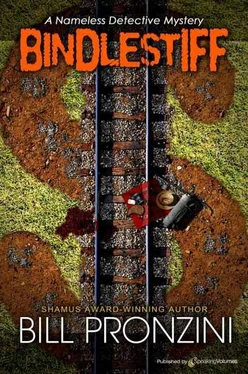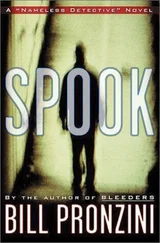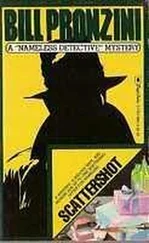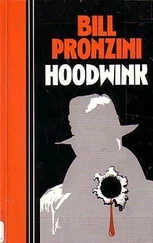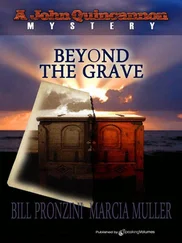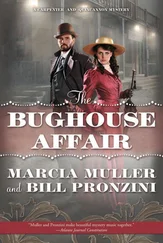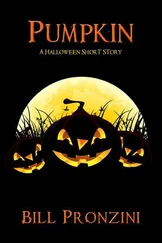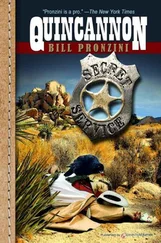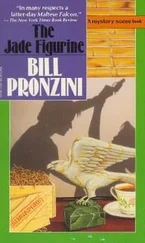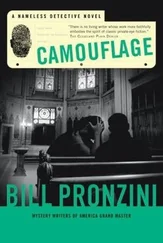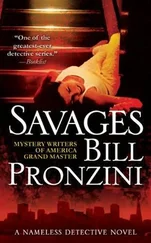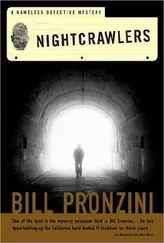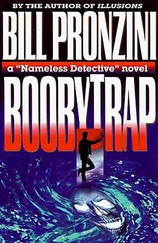Bill Pronzini - Bindlestiff
Здесь есть возможность читать онлайн «Bill Pronzini - Bindlestiff» весь текст электронной книги совершенно бесплатно (целиком полную версию без сокращений). В некоторых случаях можно слушать аудио, скачать через торрент в формате fb2 и присутствует краткое содержание. Жанр: Криминальный детектив, на английском языке. Описание произведения, (предисловие) а так же отзывы посетителей доступны на портале библиотеки ЛибКат.
- Название:Bindlestiff
- Автор:
- Жанр:
- Год:неизвестен
- ISBN:нет данных
- Рейтинг книги:4 / 5. Голосов: 1
-
Избранное:Добавить в избранное
- Отзывы:
-
Ваша оценка:
- 80
- 1
- 2
- 3
- 4
- 5
Bindlestiff: краткое содержание, описание и аннотация
Предлагаем к чтению аннотацию, описание, краткое содержание или предисловие (зависит от того, что написал сам автор книги «Bindlestiff»). Если вы не нашли необходимую информацию о книге — напишите в комментариях, мы постараемся отыскать её.
Bindlestiff — читать онлайн бесплатно полную книгу (весь текст) целиком
Ниже представлен текст книги, разбитый по страницам. Система сохранения места последней прочитанной страницы, позволяет с удобством читать онлайн бесплатно книгу «Bindlestiff», без необходимости каждый раз заново искать на чём Вы остановились. Поставьте закладку, и сможете в любой момент перейти на страницу, на которой закончили чтение.
Интервал:
Закладка:
I showed the clipping around-it was starting to get worn from all the handling-but all I got in return were headshakes and negative words. I went out through the open rear doors to where two Latino forklift operators were loading crates into a boxcar on a rail siding. They both said they didn’t know nothing about no bums, man.
And that seemed to be that. Firth Road looked like a dead-end in more ways than one.
Yet if Tris Wilson was a reliable witness, and I judged that she was, I had definitely established that Bradford had been out here at five-thirty on Tuesday afternoon. Why had he come here? Who was it he’d wanted to see?
I only had one lead left to pursue-those microfilm files of the Los Angeles Times at the library. If I couldn’t find the needle in that haystack I had two choices: I could hang around Oroville and keep flashing Bradford’s photo in the hope that somebody recognized him and could tell me where he’d gone; or I could call Miss A. Bradford, admit defeat, and head back home to San Francisco. I doubted if I would do the latter, though, at least not right away. Now that I was back in harness, it would be damned frustrating to have to walk away empty-handed on my first new case. Bad for business, too, if word got around.
Well, there was no point in worrying about any of that until the time came. Right now, there was the library.
Chapter 11
Mrs. Kennedy took me into the microfilm room, an air-conditioned cubicle at the rear of the library, and plunked me down in front of one of those magnifying machines that look like hair dryers. Then she brought me the tapes for the August and September 1967 issues of the L.A. Times, showed me how to thread the machine, and left me alone.
I started with the first of August and worked ahead chronologically, skipping the want ads, the sports and fashion and business sections and concentrating on the news and feature pages, because the odds were better that Bradford had been after something there. I paid particular attention to the more unusual local items-crimes, personal tragedies, bizarre accidents, acts of heroism, political and business scandals, things like that.
At the end of an hour and a half I had reached August 31 and all I had to show for the effort was a headache; the damn screen on the viewing machine was scratched, the light was too glary, and the pages came through blurred so that you had to squint to read the newsprint. There was no mention of Charles Bradford anywhere. Nobody named McGhan, Dallmeyer, Jorgensen, or Tris Wilson-or, for that matter, Coleman, Baxter, or Mrs. Kennedy-was mentioned either. Oroville appeared a couple of times, once in the case of a hobo who’d been found stabbed in an empty boxcar, but there wasn’t any connection in that that I could find. The guy who’d done the stabbing, another tramp with a felony record, had been arrested the following day.
I rolled the last of the August tapes out of the machine, then got up muttering to myself and took a couple of turns around the room to give my eyes a rest and ease the knotted muscles in my shoulders and neck. My left arm and hand were starting to cramp up again, too. I thought: This is a waste of time. Bradford could have been looking for anything, even a business advertisement or somebody’s recipe for clam chowder. You’ll never find it this way, groping for it blind.
Yeah, I thought then, wearily. And went back to the machine and began cranking through September 1967.
And got lucky, by God, and found it.
September 9, page eleven. In a story under a two-column headline that read: TWO DIE IN MALIBU SHOOTING. It was a love-triangle thing; a guy named Lester Raymond, who worked for one of the oil companies, had followed his wife out to the Malibu beach house of an architect named Peter Hawes, caught her and Hawes in bed together, and blown both of them away with a. 45 caliber “Korean War souvenir.” One of Hawes’ neighbors had heard the shots, seen Raymond run out of the beach house, and got the license number of his car when he sped away. The police had not found him at the time the story was written. What caught and held my attention was a paragraph on Raymond’s background near the end of the account.
Raymond was described by friends as having a violent temper. An avid builder of model railroads, he was arrested for assaulting and threatening to kill a fellow enthusiast during a dispute at a West Covina model railroaders convention in 1962…
Quickly I cranked the film ahead to September 10. The follow-up story said that Raymond had still not been apprehended. It also said that he had apparently managed to make off with thirty thousand dollars in cash and another seventy thousand in negotiable securities belonging to Peter Hawes. There was some mystery as to why Hawes had had that much money lying around his house, which probably meant that there was something illegal or at least shady about it.
September 11. Raymond was still at large. The police lieutenant in charge of the investigation had “no comment to make at this time” on the missing money and securities. There was another mention of Raymond’s hobby: he had belonged to a Los Angeles-based model railroad club called the Cannonballers.
The September 12 edition had nothing about the case. I kept cranking. What I was looking for now was a photograph of Lester Raymond; the Times doesn’t use that many photos with its crime coverage, and there hadn’t been one accompanying any of the previous three accounts. There wasn’t any with the story I found in the September 13 edition either, but the emphasis there had shifted from Raymond to the reasons for Peter Hawes having $100,000 on hand. According to the police, Hawes had intended to use the money to make a narcotics buy-heroin and marijuana; they had linked him to a group that was smuggling the stuff in from Mexico. Hawes was described as “an alleged supplier of drugs to professional and film people in the Malibu area.” Raymond, as far as anybody knew, was still a fugitive.
There were two more stories, one on September 14 following up on the drug angle and the last, little more than a squib, on September 16; the only new information they contained was the fact that Raymond’s car had been found abandoned on a sidestreet in Ventura. And that was it. Raymond and the missing money were not mentioned again in September, which meant that he hadn’t been apprehended during the rest of that month. When had the authorities caught up with him? I wondered.
Or had they caught up with him at all?
I rewound the spool of microfilm, shut off the machine. And sat there brooding. And after a time something jogged in my memory, something the WP yardmaster, Coleman, had said to me when I asked if he’d been at the yard around three on Tuesday afternoon: I was. Out by the freight storage shed, as I recall, discussing a shipment of wheel flanges with a local businessman. Wheel flanges-yeah. I began to get it then. I didn’t like it much, but I could see the way the whole thing with Charles Bradford on Tuesday might have happened.
But I needed more information before I could be sure enough to do anything about it. I went out front and got Mrs. Kennedy’s permission to make a collect call on the telephone in her office. It was after seven o’clock now; Arleen Bradford would be long gone from Denim, Inc. I dialed her home number, went through the usual rigmarole with the long-distance operator. And the line was busy.
I hunted up Mrs. Kennedy again and asked for the files of Oroville’s city directory. What I was looking for appeared in the directory for 1972. All right. I returned to her office and tried Arleen Bradford’s number again. This time, the line was clear; Miss Bradford answered on the third ring and agreed to accept the charges.
“Have you found my father yet?” she asked immediately. There was more eagerness in her voice than she might have been willing to admit to.
Читать дальшеИнтервал:
Закладка:
Похожие книги на «Bindlestiff»
Представляем Вашему вниманию похожие книги на «Bindlestiff» списком для выбора. Мы отобрали схожую по названию и смыслу литературу в надежде предоставить читателям больше вариантов отыскать новые, интересные, ещё непрочитанные произведения.
Обсуждение, отзывы о книге «Bindlestiff» и просто собственные мнения читателей. Оставьте ваши комментарии, напишите, что Вы думаете о произведении, его смысле или главных героях. Укажите что конкретно понравилось, а что нет, и почему Вы так считаете.
